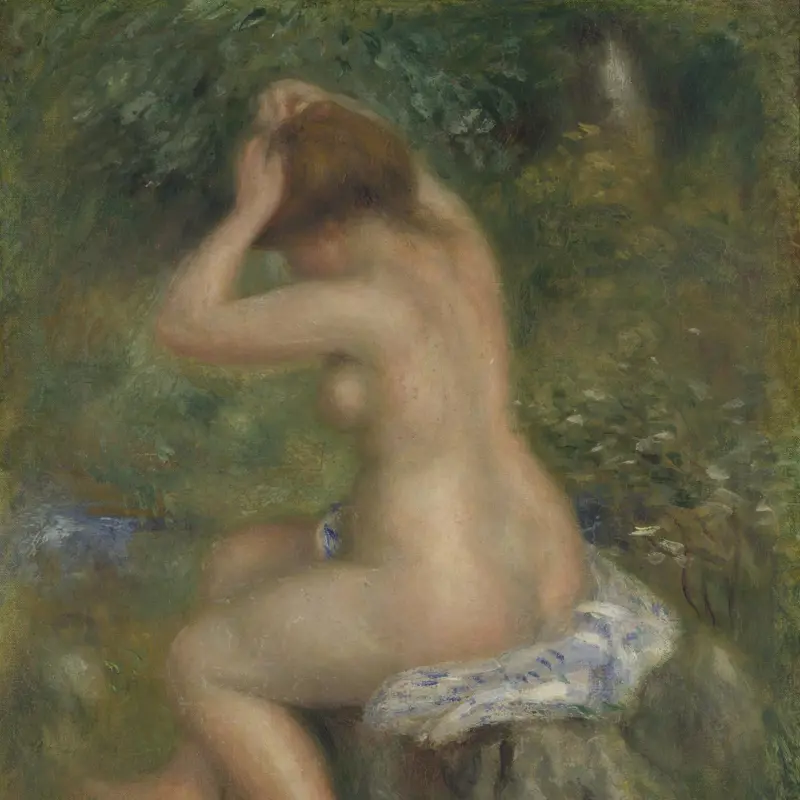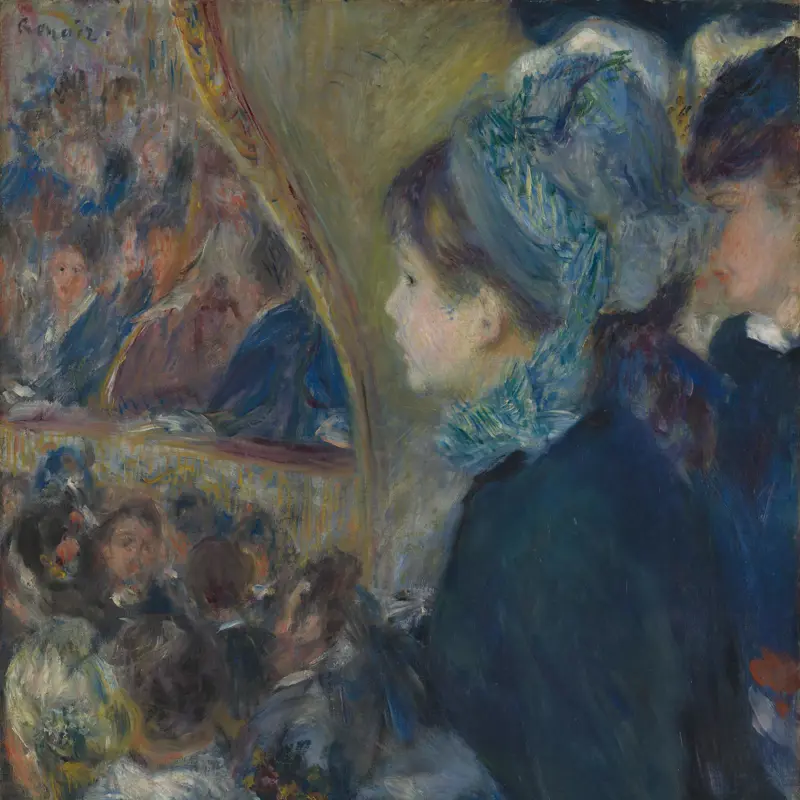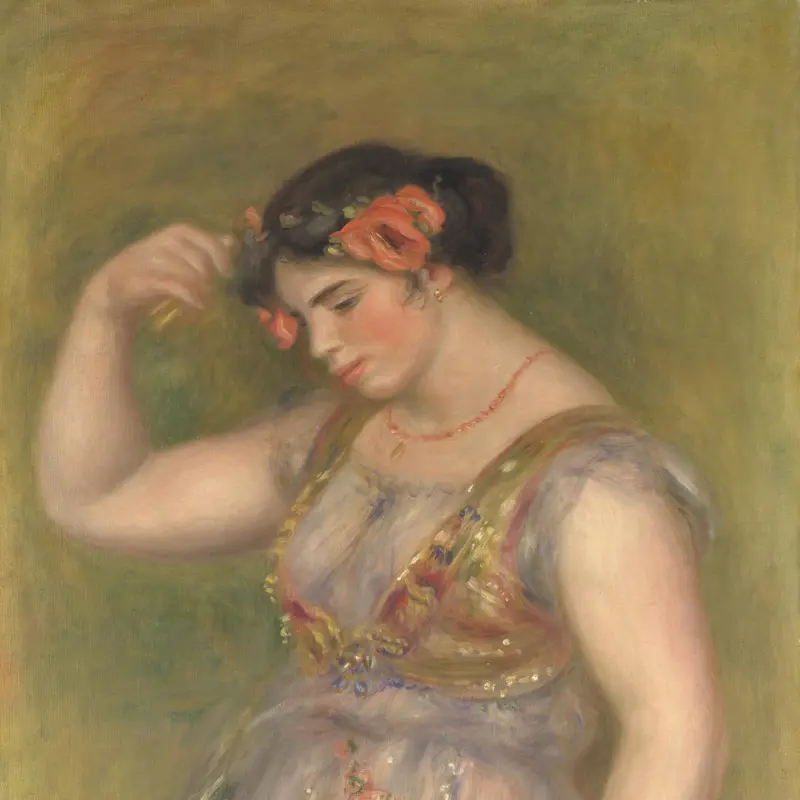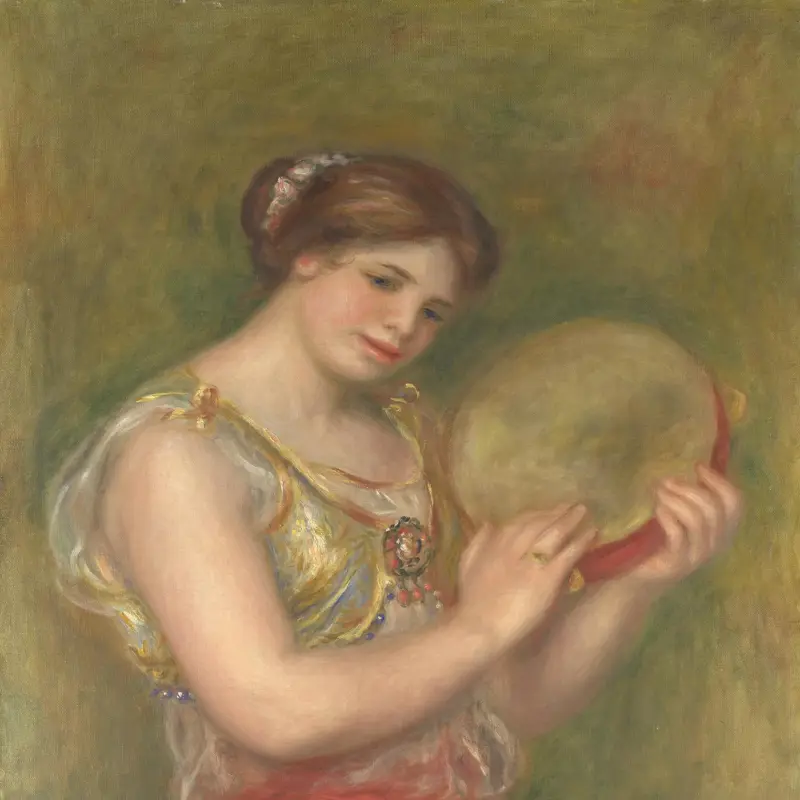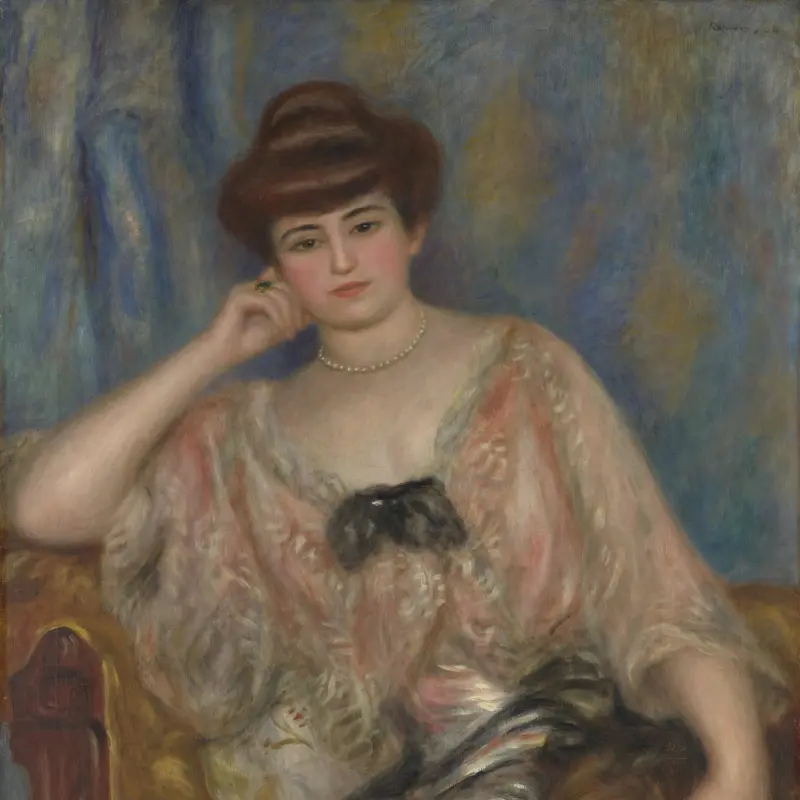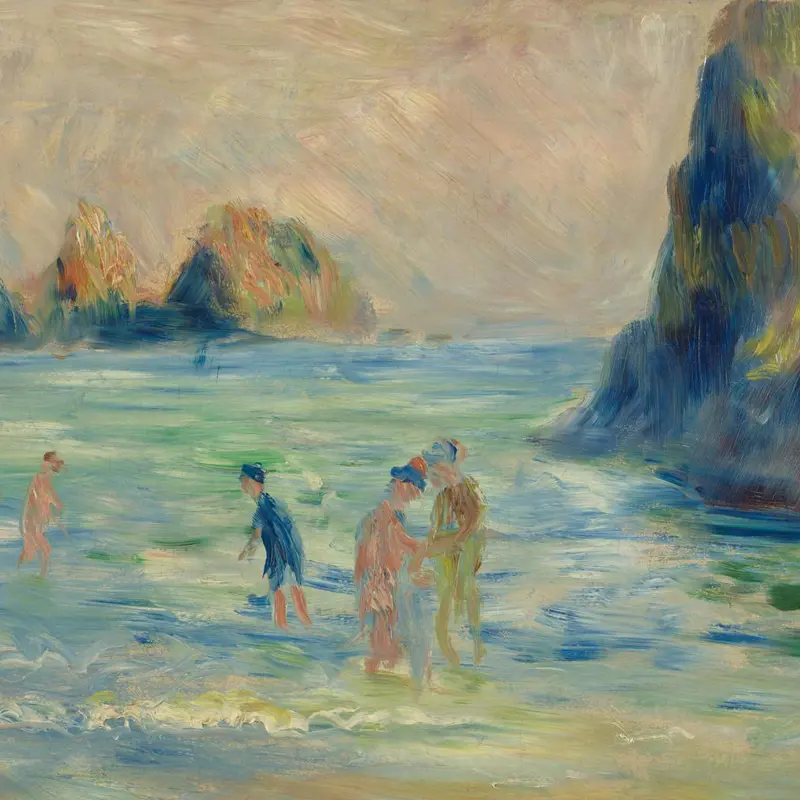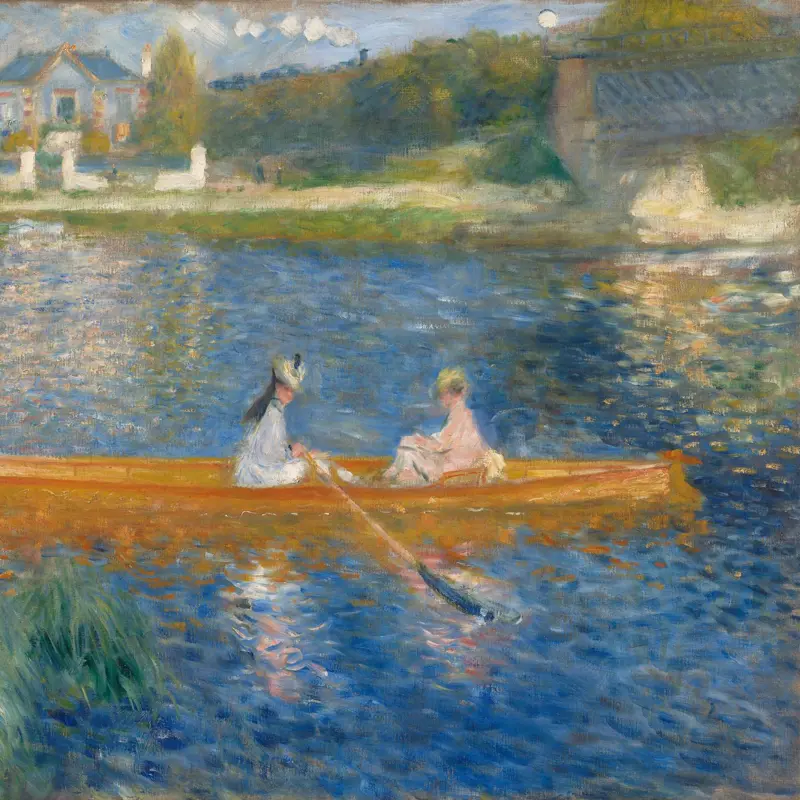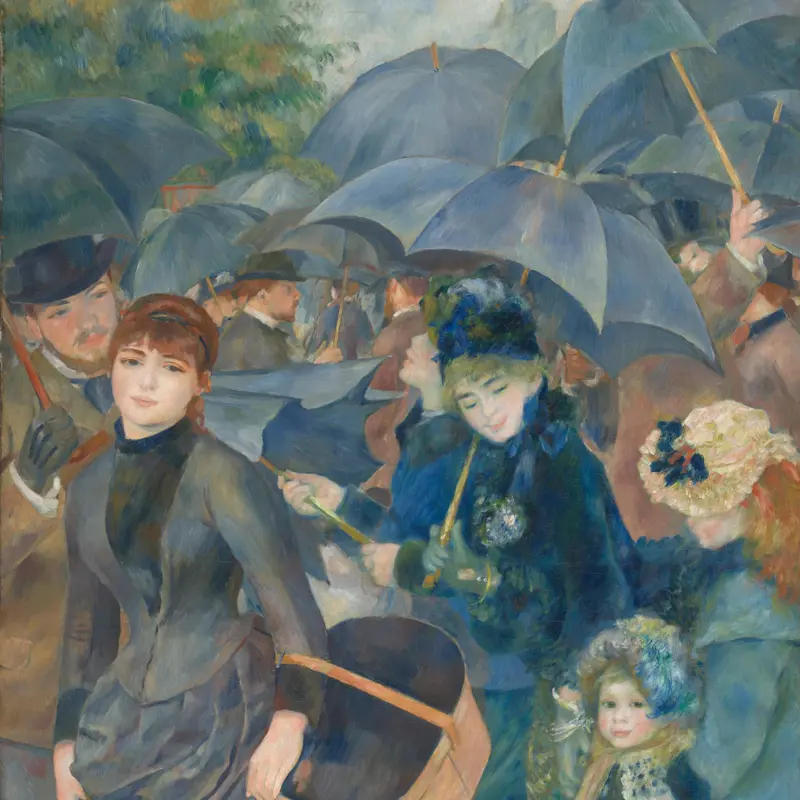Pierre-Auguste Renoir, 'Lakeside Landscape', about 1889
About the work
Overview
A description on the reverse of this painting identifies it as a landscape near Annecy, a medieval town adjacent to a large lake in the Haute-Savoie region of France. The exact location has not been identified, however. As was usual in his landscapes, Renoir has used strong colour combinations, offsetting the bright greens with contrasting shades of red (pinks, ochre and rusts) to increase the vibrancy and intensity of the pigments. Here he also seems to be mirroring the optical effects we experience when we look into the distance. Things that are close to us or in our peripheral vision – in this case, those grasses and the foliage on either side of the foreground – go out of focus as our eyes see beyond them. Instead of painting what is closer to the viewer in more detail, Renoir has used broad dabs of the brush to create an impression of blurring, tricking the eye into looking deeper into the picture.
Key facts
Details
- Full title
- Lakeside Landscape
- Artist
- Pierre-Auguste Renoir
- Artist dates
- 1841 - 1919
- Date made
- about 1889
- Medium and support
- oil on canvas
- Dimensions
- 47 × 58.2 cm
- Inscription summary
- Signed
- Acquisition credit
- Bequeathed by Helena and Kenneth Levy, 1990
- Inventory number
- NG6528
- Location
- Not on display
- Collection
- Main Collection
- Frame
- 18th-century French Frame
Provenance
Additional information
This painting is included in a list of works with incomplete provenance from 1933–1945; for more information see Whereabouts of paintings 1933–1945.
Exhibition history
-
2010Renoir: Tradition and InnovationThe National Art Centre, Tokyo20 January 2010 - 5 April 2010The National Museum of Art17 April 2010 - 27 June 2010
-
2014Renoir in BritainThe Lightbox8 February 2014 - 20 April 2014
Bibliography
-
1918A. Vollard, Tableaux, pastels et dessins de Pierre-Auguste Renoir, Paris 1989
-
1936Lefevre Gallery, A Collection of Paintings by Eugène Boudin and Some Contemporaries, London 1936
-
1990National Gallery, The National Gallery Report: April 1989 - March 1990, London 1990
-
1991National Gallery, The National Gallery Report: April 1990 - March 1991, London 1991
-
1994J. House, Renoir: Master Impressionist (exh. cat. Queensland Art Gallery, 30 July - 11 September 1994; National Gallery of Victoria, 18 September - 30 October 1994), Sydney 1994
-
2001
C. Baker and T. Henry, The National Gallery: Complete Illustrated Catalogue, London 2001
About this record
If you know more about this work or have spotted an error, please contact us. Please note that exhibition histories are listed from 2009 onwards. Bibliographies may not be complete; more comprehensive information is available in the National Gallery Library.

